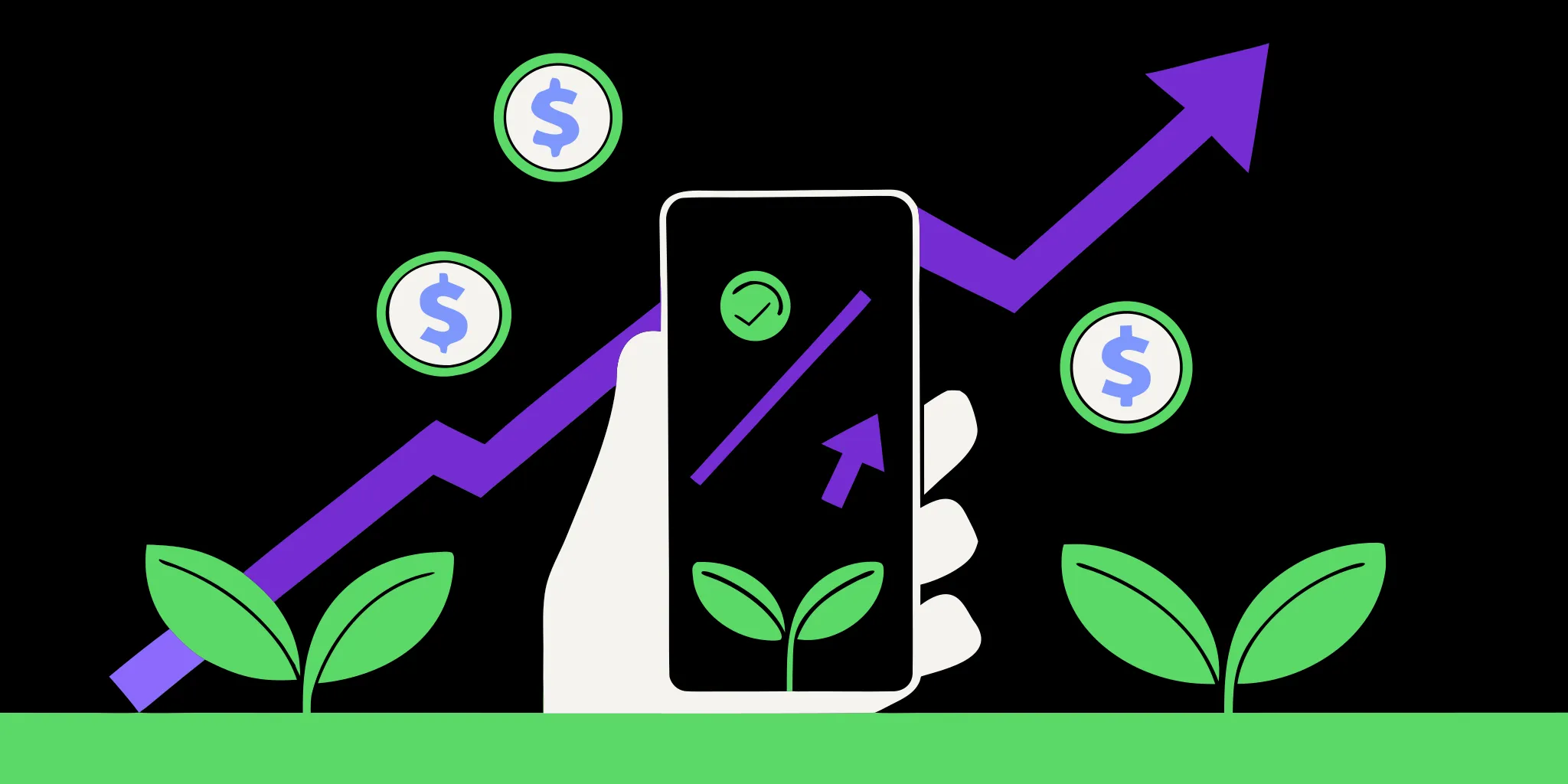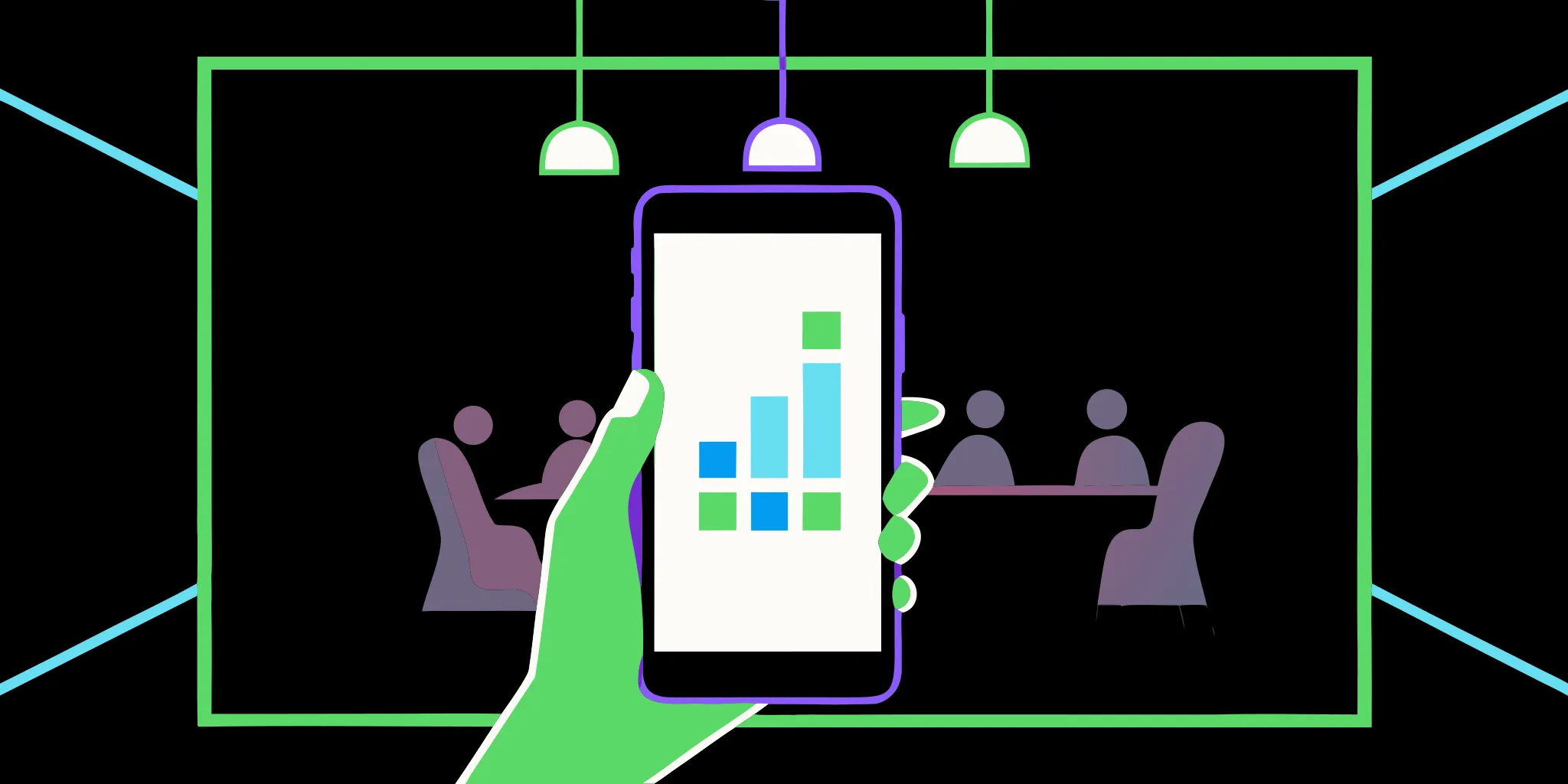
In the beginning, nonprofits raised funds primarily through direct mail. Supporters mailed in checks and received updates. Today, effective social fundraising has transformed how nonprofits connect with donors, moving beyond traditional methods.
Then, there was website-based giving. Supporters were able to give whenever and wherever they wanted via an online giving page hosted on your nonprofit’s website.
Now, we’re seeing the third shift in fundraising occur in real-time, as social giving takes center stage. With social media fundraising, supporters want to donate and experience continuing engagement in-channel on the networks they’re already spending significant time on: social networks.
In this comprehensive guide to social giving, we’re going to answer the following three questions:
- What is social media fundraising?
- How is social giving evolving?
- How can you drive social giving in your fundraising strategy?
Let’s get started.

What is Social Fundraising?
Social media fundraising refers to the process of raising money for a cause, individual, organization, or project through various social media platforms. It has become a popular and effective way to garner support and donations, leveraging the wide reach and networking capabilities of social media. Here's a breakdown of some of the key social channels and key fundrising features:
- Facebook: Allows fundraising through dedicated fundraising pages and tools. Users can donate directly on the platform, and it's often used for causes like medical expenses, disaster relief, or non-profit support.
- Instagram: Offers donation stickers in stories, allowing users to raise funds for non-profits.
- TikTok: Has introduced donation stickers and features, particularly supporting non-profit organizations.
- LinkedIn: More suited for professional and corporate fundraising efforts, often for non-profits or corporate social responsibility (CSR) initiatives.
- YouTube: Non-profits can use donation buttons on their videos and live streams.
The Evolution of Social Fundraising
When considering the evolution of social fundraising, we have to discuss two main drivers: general innovation in fundraising overall, and innovation that occurred in recent years due to the COVID-19 pandemic.
A New Era in Fundraising
The future of social fundraising is here, and it’s taking place through in-channel engagement on social media.
If you’ve been in the nonprofit sector for a while, you’ve seen drastic changes in how donors prefer to give to nonprofits. First, it was through mailed checks sent via direct mail. Then, online donation pages appeared on websites and credit and debit cards became the only tools needed to make a donation.
Now, we’re watching a third shift in how donors give happen. Now, donors prefer giving virtually and in-channel in the social networks on which they spend significant amounts of time. Of course, this refers to the “Donate” buttons on Facebook, Instagram, and Twitter, along with Facebook Challenges and 24-hour giving days that are replacing formal galas and auctions.

Jeremy Berman notes a number of reasons why digitally native, in-channel social giving is on the rise:
- “Ease of giving” is a crucial determining factor in whether or not someone makes a donation. Giving on social media is seamless—payment information is already loaded and supporters can make a gift with the click of a button.
- Supporters want to give where they spend time. Donors are busy. Rather than driving to an event or navigating to an unfamiliar website, supporters want to give where they’re already spending their time—on social media.
- It’s home to the next generation of supporters. Millennials now make up the largest percentage of the workforce, and their financial significance is only going to grow. Further, Millennials and Gen Z alike have a growing desire to drive positive change. Social media is the platform to connect with the next generation of movers and shakers.
While some nonprofits have shied away from social media-based fundraising tactics in the past, it’s time to embrace what is quickly becoming the next wave of giving.
Future-Proofing Your Nonprofit with Social Fundraising
When the COVID-19 pandemic first emerged, nonprofits everywhere became concerned about the effects of the economy and job market on donors’ capacities to give.
As a result, the nonprofit sector got creative. Nonprofits sought the support of donor-advised funds and planned gifts, foundations lessened the red tape separating organizations from much-needed grant funding, and social giving experienced a boom.
In an article contributed to AFP Global, Maria Clark cited the need for “future-proofing” nonprofits moving forward: “It takes investment to build new revenue streams—both time and resources—so don’t wait until you ‘have to.’”
Clark identified two main avenues for future-proofing an organization: embracing entrepreneurship and diversifying a nonprofit’s revenue sources. One impactful way for nonprofits to accomplish both goals is by incorporating Challenges on Facebook, a type of social giving, into their calendars.
Virtual Facebook Challenges are effective alternatives to traditional nonprofit peer-to-peer events. Check out the following examples:
- The Trevor Project
- Susan G. Komen
- The American Diabetes Association (ADA)
- Colorectal Cancer Alliance
These Challenges on Facebook have not only been record-breaking in terms of participation and funding, but they’ve also allowed nonprofits to connect with thousands of new supporters online.
With Facebook Groups and Messenger making it easy to interact with supporters through conversational messaging, your nonprofit can build long-lasting relationships by providing real-time encouragement and tips. We’ll cover Facebook Challenges in-depth later in this guide.
Driving Success in Your Social Fundraising Strategy
Social fundraising connects your nonprofit with a unique audience. These supporters aren’t participating for a <a href="/blog/facebook-donation-tax-receipt">tax write-off</a> or because they have a well-established relationship with your nonprofit. Understanding what motivates social fundraisers is key to inspiring further action and successful campaigns.
Understand what motivates social media fundraising.
Social fundraising connects your nonprofit with an entirely different audience than you’ve likely encountered in the past. These supporters aren’t participating for a tax write-off or because they have a well-established relationship with your nonprofit. It’s important to understand what motivates social fundraisers, so you can use these motivations to inspire further action.
There are a number of motivators behind social fundraising, including:
- It’s an easy, convenient way to give. It’s hard to say “no” when it only takes one click to make a difference.
- The individual has an affinity for your cause. They may have never heard of your nonprofit before, but they have a personal connection to your cause and are happy to have discovered a new avenue to contribute.
- There is a sense of community with social giving. Unlike mailing a check or making a quick donation on a website, both of which are solitary, social giving is inherently community-driven. Whether it’s creating a birthday fundraiser and sharing it with friends and family members, or meeting new peers during a Challenge on Facebook, social giving is a way to bond with others through philanthropy.
Craft your social giving campaigns with these motivations in mind. For example, you can:

- Communicate with supporters about how social giving works. Share how easy it is to give via social networks with a step-by-step explainer about how to participate in Facebook fundraisers and Challenges. With a conversational messaging platform like GoodUnited, you can inform and empower supporters to join Challenges on Facebook. With the one-click Challenge builder, supporters can use pre-selected language and imagery to set up their personal campaigns alongside your Facebook Challenge.
- Seek out lookalike audiences on social platforms. For example, you can use targeted Facebook Ads campaigns that target Facebook users who have similar characteristics and interests as your known supporters. This allows you to market your campaigns to individuals who are likely to support your mission, even if they aren’t familiar with your nonprofit yet.
- Make the most of peer-to-peer-adjacent social fundraising tools. There are now providers that are making more traditional peer-to-peer fundraising features available on social networks. For example, you can access a Referral Button that allows Challenge participants to refer their friends to join the campaign. And, you can access Challenge Teams, so participants can sign up as a group rather than independently.
With these strategies in mind, you’ll be appealing to the next generation of online supporters and connecting with new audiences online.
Adopt a Digital-First Social Fundraising Mindset
According to Tiltify’s landmark research on “The New Normal” in peer-to-peer fundraising, “For peer-to-peer fundraising programs to remain relevant in the rapidly changing digital world, they must evolve their strategies and tactics to better meet the needs of the tech-savvy public.” Essentially, it’s time for nonprofits to embrace a digital-native approach when planning fundraising campaigns moving forward.

A digitally-native approach means that, rather than conceptualizing a fundraiser for in-person engagement and pivoting it to the internet, you plan a campaign with the idea that it will take place online from the start.
There are a few interesting points to highlight from Tiltify’s research with regard to embracing a digitally-native mentality:
- It’s time to embrace innovative digital engagement methods. For example, Tiltify notes that TikTok is experiencing booming growth in the number of users and nonprofit engagement and a total of 69 million messages sent on Facebook. This could also mean engaging supporters more personally through conversational messaging and embracing creative digital peer-to-peer activities, such as video gaming and streaming fundraisers.
- Donors should be active participants in the event. With in-person events, donors give to a peer fundraiser and might hear about their experience walking a mile, running a race, or something along those lines after the event occurs. With a virtual campaign, donors can keep up with participants' successes using rewards, targets, and polls. For example, participants can complete a new “silly” task for each $100 raised. That way, donors and participants stay engaged from start to finish.
- Fundraising events outperform individual-created campaigns. Essentially, you’re likely to raise more by hosting Challenges on Facebook than by simply equipping your supporters with the knowledge to host their own individual birthday fundraisers.
- Fundraisers who have hosted more than three campaigns raised almost three times as much as first-time fundraisers. A digitally-native mentality means recognizing that virtual fundraising campaigns can be repeated throughout the year. You can create a Facebook group for a physical fitness-based Challenge and keep the group open throughout the year. Every few months, you can activate that same group in a new campaign—perhaps each time targeting a different physical fitness activity.
By conceptualizing campaigns with digital engagement in mind from the start, the possibilities for your P2P efforts greatly expand. Thinking outside of the box in this manner is key for successful social fundraising.
Embrace Social Fundraising Channels
Let’s explore the many avenues that social fundraising can take for your nonprofit.
Social media fundraising tools started with the introduction of the Donate button on Facebook, soon followed by birthday fundraisers and individual campaigns hosted by Facebook users on behalf of nonprofits. Now, you can access the following on:
- Instagram: The Donate sticker in stories. Clicking on the button will open up a page through which the supporter can donate directly to the nonprofit.
- TikTok: The Donation Sticker and nonprofit Profile Link. Supporters can click these buttons and visit a screen through which they can make a donation to the corresponding charity.
And of course, Facebook has the Donate button, supporter-created fundraisers, and Facebook Challenges.
As a quick recap: Challenges on Facebook are time-bound peer-to-peer fundraising campaigns in which participants complete a specified activity (ex: walking 10k steps per day) for a set time period (ex: 30 days) while raising funds from their peers on Facebook. During the Challenge, all participants are added to a corresponding group in which they connect with one another and engage in a digital community.
To host a Challenge, you simply:

- Set the parameters for the Challenge. This includes choosing the dates and duration as well as the Challenge activity that participants will complete.
- Create the digital infrastructure. This is the Challenge group that participants will connect with.
- Advertise the event. This is done with targeted Facebook Ads, through which prospective participants can easily sign up with a single click.
- Engage with participants for the duration. You’ll want to post in the Challenge group, as well as connect with participants one-on-one with conversational messaging in Messenger.
Since Challenges have the potential to connect your nonprofit with tens of thousands (or more!) new supporters, you may be wondering how it’s possible to engage in conversational messaging with each and every participant in Messenger. Let’s explore that idea further in the next section.
Automate Conversational Messaging for Social Fundraising
As your nonprofit’s social audience grows, it’s likely that the individual conversations you’ll have with each Challenge participant will outpace your team’s capacity. But, the last thing you want to do is abandon these messages or create a sub-par experience for all of the new supporters you’re engaging in conversational messaging with.
Some nonprofits have shied away from messaging automation in the past, whether due to a fear of robotic-sounding recordings or difficulties creating an authentic experience. However, when it comes to social fundraising, embracing conversational messaging automation is the only way to scale up and build your relationships with each individual social supporter sustainably.
By partnering with GoodUnited, your nonprofit can leverage a series of custom, automated conversational messaging sequences that align with both your brand and priorities as well as your supporters’ responses. For supporters, it will feel as though they’re speaking (via Messenger) with a representative of your nonprofit, but you won’t have to have team members waiting by the computer to hit “send.”
Not only will this allow you to scale up conversations, but you’ll also get to learn more about your supporters, obtaining information that will help you optimize your social giving procedures going forward (such as if you choose to host repeated Challenges down the line!)
Partner with a social fundraising services provider or social giving platform.
We’ve briefly discussed partnering with a social fundraising services provider to bring your social giving strategy to life. To give you an idea of what this would look like, consider GoodUnited’s turnkey social giving solution:

- GoodUnited Web App: This includes the Challenges Dashboard with same-day revenue reporting and social donor and fundraiser profiles. You can monitor and optimize Challenge performance in real-time.
- The Lab: This is where the majority of testing takes place, including A/B testing messaging journeys. We’ll test small before scaling up, ensuring your engagement strategy will work before deploying it to a larger audience.
- Cultivation Engine: We’ll turn unstructured social fundraising data into actionable insights to help you engage social donors in-channel. We’ll help you understand who your social donors are, how you can retain them going forward, and how you can host successful recurring fundraisers throughout the year.
- In-Channel Conversational Messaging: This refers to personalized and meaningful messaging experiences that drive results with supporters. We’ll author conversational messaging sequences, help you thank donors, and identify, target, and retarget social donors across social channels.
Beyond accessing a team that will orchestrate your entire social fundraising strategy—from managing Challenges to automating conversational messaging and ongoing optimization—you also access a team that’s at the forefront of social giving innovation. GoodUnited offers a number of groundbreaking social fundraising tools, including:
- 1-Click Challenge Builder: Empower participants to join a fundraiser with a single click.
- Fundraiser Stories: Visualize what matters to your participants to understand what will motivate them to return for future fundraisers.
- Activity Tracker: Give participants the ability to easily log and track their Challenge activity completion.
- Challenge Teams: Allow participants to sign up in teams, which tends to raise more revenue than individual participants.
- Referral Button: Invite participants to refer a friend and further expand your social audience.
These innovations are merging the best of social fundraising with traditional peer-to-peer tools, creating the ultimate social giving experience for both your nonprofit and participants alike. And, you can only access them by partnering with a provider that’s on the front lines of innovation, like GoodUnited.
Social giving is where nonprofit fundraising is heading. If you haven’t incorporated it into your efforts yet, it’s time to start!
If you’re venturing into social fundraising for the first time, or you’re looking for tips to elevate your strategy, consider partnering with a social fundraising services provider. Reach out to our team at GoodUnited today to learn more.
In the meantime, explore the following additional resources about social giving and Challenges on Facebook:
- Facebook Fundraiser Payout: How It Works for Nonprofits. Discover the payout methods and associated best practices for nonprofit Facebook fundraisers in this guide.
- How to Use Facebook Messenger: A Complete Guide for Nonprofits. Learn how to tap into the potential of Facebook Messenger for conversational messaging in this guide.
- Repeat Challenges on Facebook: The Key to Recurring Revenue. Repeat Challenges on Facebook can create a consistent source of revenue for your nonprofit. Discover how to make the most of these opportunities in this guide.



















